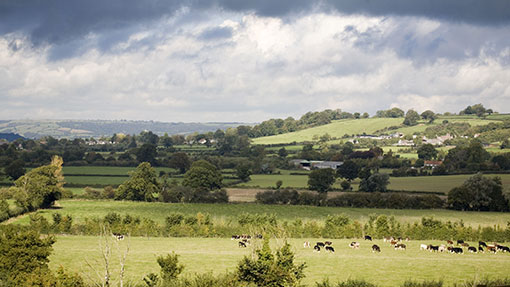Get ready for grants to aid farm and rural economies

Grant schemes under the reformed CAP will open in England from next year. Consultant Mark Wheeler of Brown & Co looks at what is likely to be available.
The emphasis of the CAP is shifting to new decoupled payments promoting rural development and management of the countryside.
The scope of these so-called Pillar 2 payments is increasingly wide, so farmers and landowners need to understand how to make the most of the new Rural Development Programme for England (RDPE), which will begin on 1 January 2015.
Under the scheme, grants will again be awarded on a competitive basis, so those making the strongest cases will have the best chance of securing funds. Successful bids will involve projects giving the best value in terms of improving productivity, efficiency and/or the health of the rural economy.
See also: Defra unveils £19m funding for small farms
Funding could be considered for capital items or for revenue support. It will be important to identify which scheme is most relevant to ensure efforts are focused in the right area. Rural businesses need to think laterally about what items and projects might be eligible and whether they can meet the criteria.
As well as the benefits these grants offer to farming enterprises, there will be opportunities for help to develop energy, employment, tourism and other diversifications.
Over the next seven years the programme will invest £3.5bn in a range of schemes supporting three key areas:
- Managing the environment
- Increasing farming and forestry productivity
- Growing the rural economy
Anyone with a project already in mind should start to prepare in good time.
The first area – managing the environment – will be covered by a single scheme, the New Environmental Land Management Scheme (NELMS), which will account for £3.1bn of the RDP funding.
This will replace the existing Environmental Stewardship and English Woodland Grant schemes and is likely to have broad appeal. Successful agreements are likely to start from 1 January 2016 and will normally run for five years.
That leaves considerable funds for the second and third areas. Final guidance on exactly what these entail and how to apply is expected in the next few months.
We do know that there will be about £140m to increase farming and forestry productivity over the life of the programme. This area has several aims, including:
- Innovation through the use of new technology and research
- Improving skills and training
- Greater co-operation between farmers and others, including agri-food businesses, in the land-based sectors
- Supporting projects that benefit the environment
The new scheme, the Farming and Forestry Production Scheme (FFPS), will replace the very practical and valuable Farm and Forestry Improvement Scheme (FFIS).
It is likely to be similar to FFIS, consisting of a number of rounds offering small-scale grants targeted at quite specific areas that can generally deliver very strong returns to the business employing them.
Recent FFIS priorities have included nutrient management (for example, GPS technology to assist with nutrient application) as well as energy saving and water resource management. Under FFIS, 40% grants in lowland areas and 50% in upland areas to a maximum of £35,000 were available. The scheme’s popularity is demonstrated by the fact that bids worth £26m were put in for the £10m available in the final round.
Brown & Co had a success rate of more than 98% in the most recent round, with precision farming guidance systems accounting for the bulk of our FFIS applications and bringing significant environmental as well as economic benefits. On average grants of close to £8,000 were awarded.
Grants will also be administered through regional Local Enterprise Partnerships (LEPs) and Local Action Groups (LAGs).
LEPs will target £177m at rural priorities such as:
- Development of business knowledge and skills
- Supporting small or microbusinesses
- Investing in broadband and renewable energy
- Promoting rural tourism
LAGs are formed under an EU programme known as Leader which encourages local representatives to become involved in shaping development priorities.
These groups will have £138m to spend during the programme, available to farmers, foresters, other local businesses and rural communities. This money represent a real opportunity – themes will be much wider than the FFPS and not necessarily exclusively agricultural.
LEPs and LAGs are bidding for funds and shaping what projects they will support, so it is well worth farmers getting involved or at least making an effort to meet some of those on the boards and in local groups to either shape the priorities or at least understand them.
